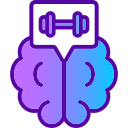Visualization is a powerful mental training tool utilized by athletes across all levels to enhance their sports performance. By mentally rehearsing their actions, movements, and strategies, athletes can improve their focus, boost confidence, and increase their chances of success. This web page explores how visualization techniques can be implemented to sharpen sports skills, manage anxiety, and create a winning mindset, ultimately contributing to optimal performance when it counts.
Neural Pathways and Mental Rehearsal
Scientific studies reveal that mental imagery stimulates the same neural pathways used for physical movement. This phenomenon means that when athletes vividly imagine themselves executing a serve, throw, or jump, their brains send signals as if they’re performing the action for real. Over time, this kind of practice can build stronger neural connections, making actual movement more fluid and accurate. Mental rehearsal, therefore, becomes a form of deliberate practice, sharpening the body’s responses and enhancing motor learning. Consistent visualization can result in increased coordination, reaction time, and overall athletic capability, even when physical training time is limited.
Psychological Benefits of Visualization
Visualization offers a unique advantage by improving psychological preparedness. When athletes encounter anxiety before competition, visualizing successful outcomes can reduce nerves and foster mental calm. By repeatedly imagining peak performance and well-executed skills, athletes strengthen belief in their abilities and reduce the risk of self-doubt undermining their performance. This mental conditioning reinforces confidence, focus, and composure, critical factors for excellence in high-pressure situations. Consequently, athletes who use visualization are often able to manage stress more effectively and sustain motivation throughout their training journey.
Bridging the Gap Between Practice and Performance
One of the most significant challenges in sports is transferring progress from practice to competition. Visualization acts as a bridge, enabling athletes to mentally “walk through” critical moments, strategize for competitors, or rehearse handling difficult scenarios. By doing so, they cultivate a sense of familiarity with high-stakes environments and increase their resistance to pressure. The process of repeatedly experiencing success in the mind prepares athletes for real-life challenges, facilitating smoother transitions from practice settings to actual performance, where stakes—and anxieties—are higher.
Effective Visualization Techniques for Athletes
First-Person Versus Third-Person Imagery
Athletes may practice visualization from either the first-person perspective—imagining themselves performing the action through their own eyes—or from the third-person viewpoint, as if observing themselves from the outside. First-person imagery helps athletes focus on sensory feedback, such as the feel of their grip or the sound of the crowd, creating a realistic simulation of movement. Third-person perspective, on the other hand, allows for a broader assessment of technique and body positioning. Both perspectives serve unique purposes in skill improvement: first-person enhances embodied experience while third-person contributes to technical analysis, boosting overall performance through combined use.


Incorporating Vivid Senses and Detail
For visualization to be most effective, athletes must inject vividness and sensory details into their imagery. This involves not just seeing the movements but also feeling the textures, hearing the sounds, and sensing the emotions associated with peak performance. Imagining the rush of wind during a sprint or the tension of muscles during a lift intensifies the experience, solidifying neural connections and making the scenario feel more lifelike. Athletes who detail their visualization sessions in this way are better able to “trick” the brain into believing the event is genuinely occurring, translating into tangible improvements during actual performance.
Integrating Visualization into Training Routines
Consistency Leads to Mastery
Just like physical training, the benefits of visualization are realized through consistent, repeated practice. Athletes are encouraged to allocate dedicated time each day or week to mental rehearsal, reinforcing skills and scenarios pertinent to their sport. Over weeks and months, this routine enables visualization to become second nature: athletes begin to automatically engage mental imagery techniques during training or competition. Consistency fosters mastery, as recurring mental rehearsal leads to stronger neural imprints, translating into more reliable and confident performance when it matters most.
Combining Visualization with Physical Drills
Visualization is even more impactful when coordinated with physical practice. By mentally rehearsing a skill immediately before or after its physical execution, athletes reinforce correct technique, muscle memory, and response patterns. This pairing accelerates the learning process, as the mind’s preview or review of the movement strengthens the body’s ability to replicate it. Coaches may encourage athletes to close their eyes before a drill and imagine success, then perform the movement, thereby blending cognitive and physical learning for superior skill retention and refinement.
Utilizing Professional Guidance
Working with sports psychologists or trained coaches can amplify the effectiveness of visualization. These professionals help athletes tailor visualization routines to their specific goals, identify areas for mental improvement, and address challenges such as intrusive negative thoughts. Structured guidance ensures that imagery sessions are purposeful and productive, maximizing gains from each rehearsal. Professionals also provide feedback on progress and teach advanced techniques, making mental practice an intentional and evolving part of athletic development.
